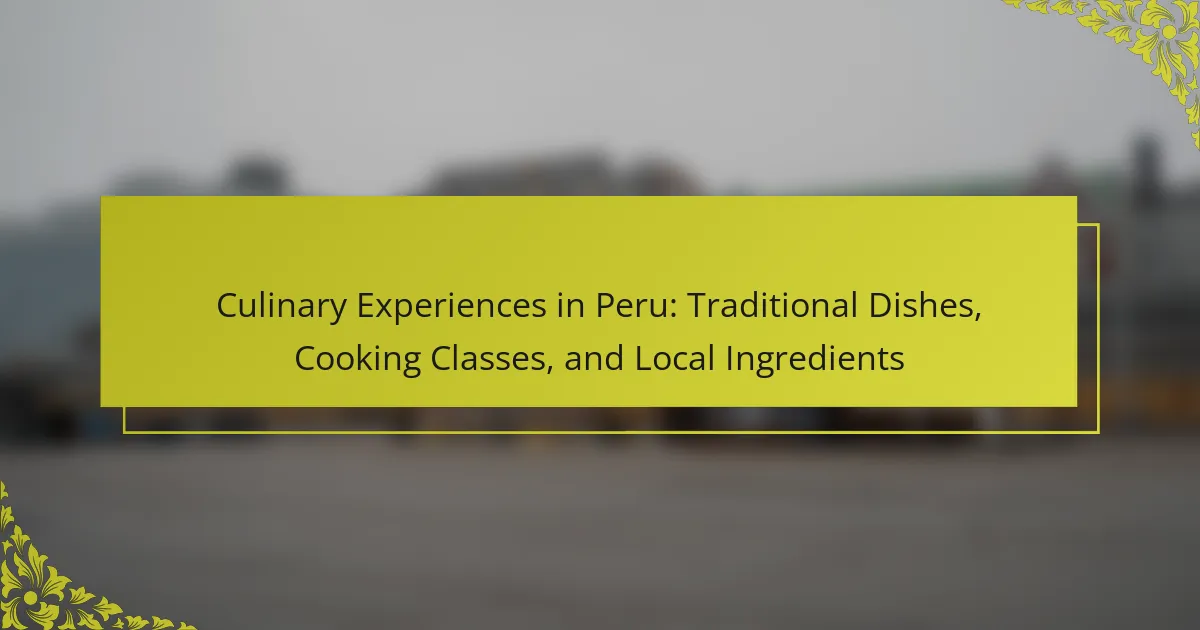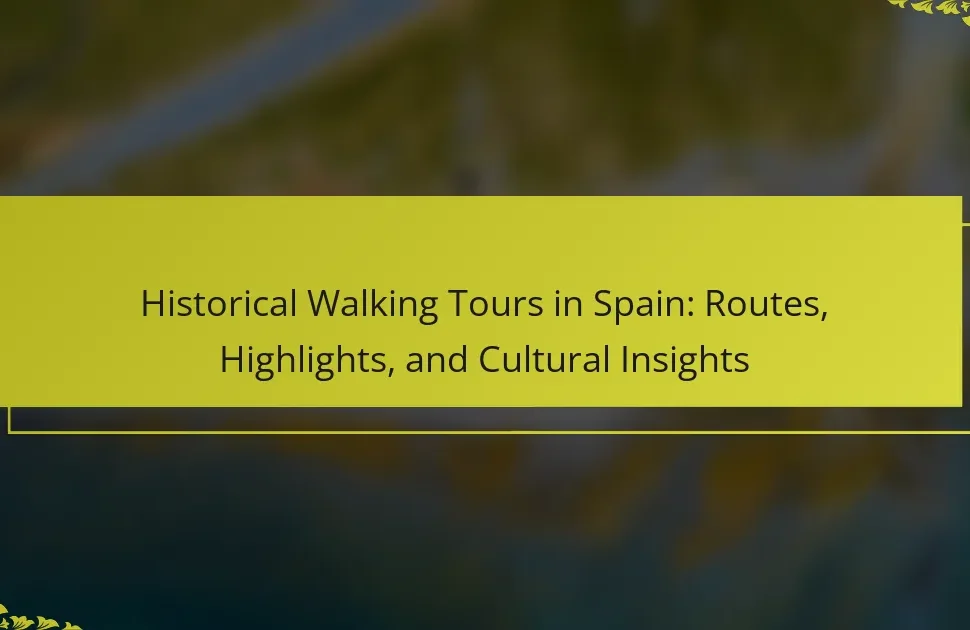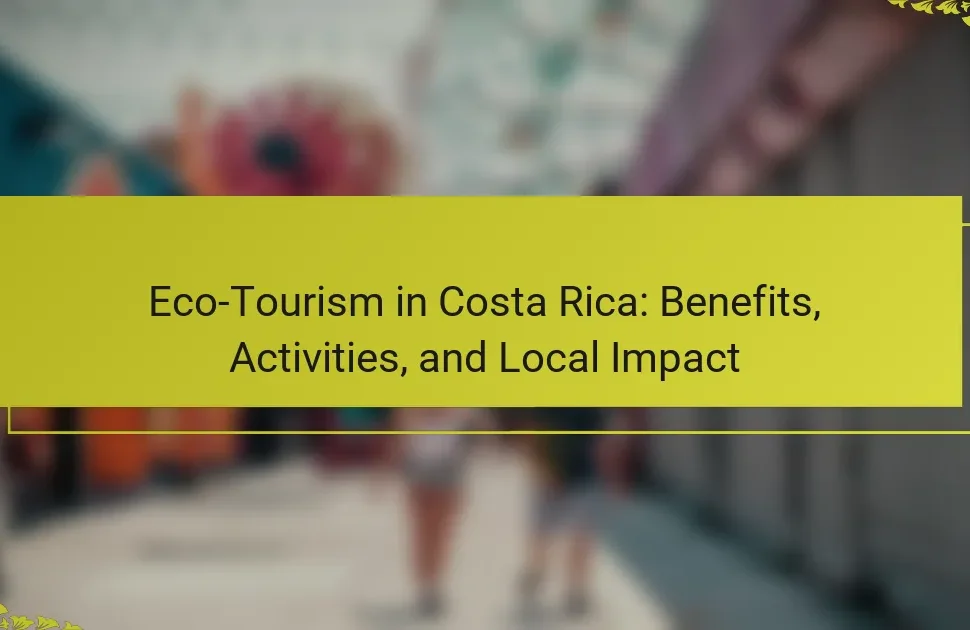Exploring culinary experiences in Peru offers a unique opportunity to savor traditional dishes, engage in cooking classes, and discover local ingredients. Key dishes like ceviche and lomo saltado highlight Peru’s rich culinary heritage. Cooking classes provide hands-on experiences with native ingredients, fostering a deeper appreciation for local culture. Understanding the challenges chefs face in promoting these traditions adds context to the vibrant Peruvian food scene.
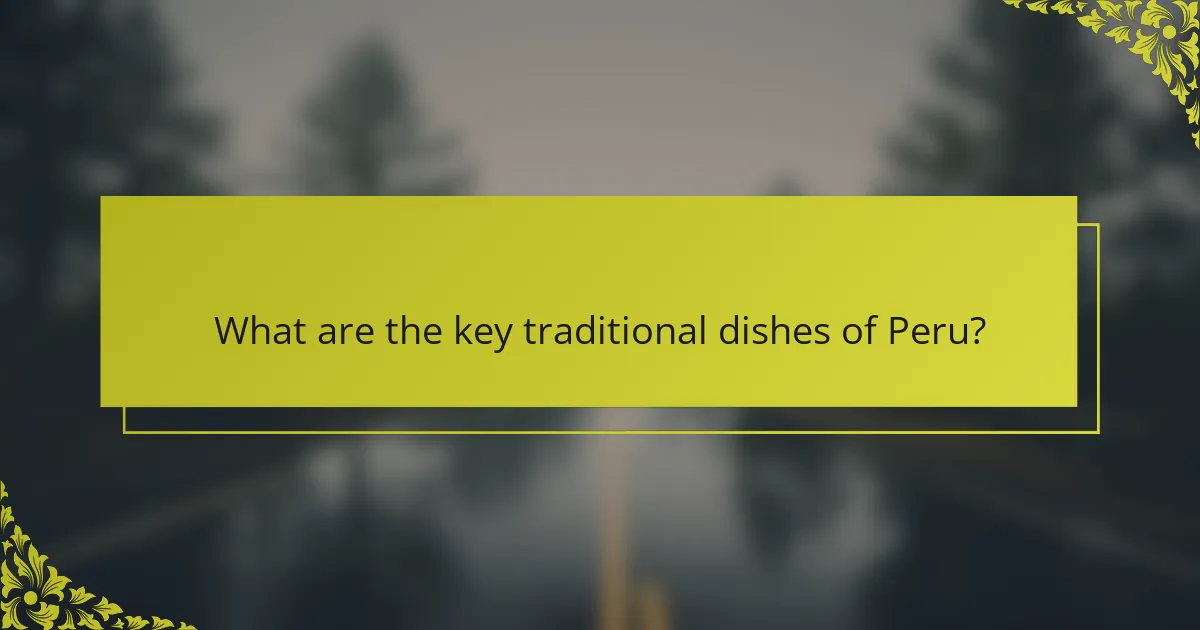
What are the key traditional dishes of Peru?
Peru’s key traditional dishes include ceviche, lomo saltado, and ají de gallina. Ceviche features fresh fish marinated in lime juice, while lomo saltado combines stir-fried beef with vegetables and fries. Ají de gallina is a creamy chicken dish with a spicy sauce. These dishes reflect Peru’s diverse culinary heritage, influenced by indigenous ingredients and Spanish colonial flavors.
How do ingredients influence the flavors of Peruvian cuisine?
Ingredients significantly influence the flavors of Peruvian cuisine through their diversity and unique characteristics. The use of native ingredients like aji peppers, potatoes, and corn creates distinct regional flavors. For example, aji amarillo adds a fruity heat, while Peruvian potatoes provide various textures and tastes. Additionally, the incorporation of herbs like cilantro and spices enhances the overall flavor profile. The combination of these ingredients reflects Peru’s rich cultural heritage and biodiversity, resulting in a culinary experience that is both vibrant and complex.
Which regional variations exist among traditional dishes?
Peru boasts diverse regional variations in traditional dishes influenced by geography and culture. Coastal areas feature seafood dishes like ceviche, while the Andes region emphasizes hearty ingredients such as potatoes and quinoa. The Amazon basin offers unique flavors with ingredients like fish and tropical fruits. Each region showcases distinct cooking techniques and local ingredients, enriching Peru’s culinary landscape.
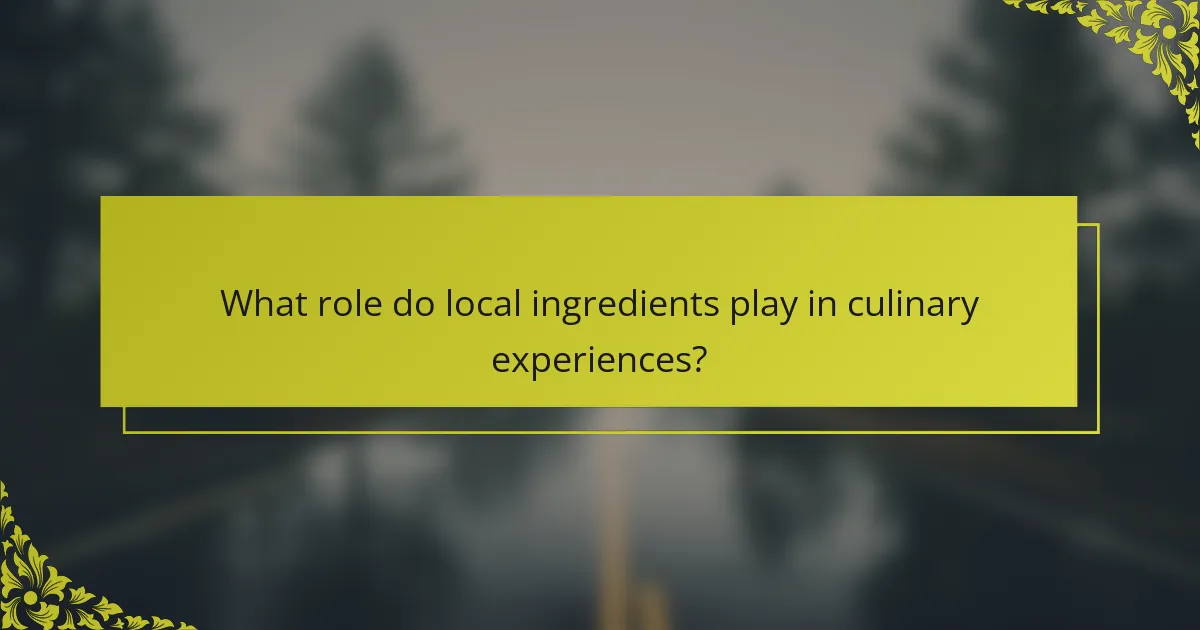
What role do local ingredients play in culinary experiences?
Local ingredients are essential in culinary experiences, especially in Peru, as they enhance authenticity and flavor. Using native produce like potatoes, quinoa, and aji peppers reflects regional traditions and biodiversity. These ingredients contribute unique tastes and textures to traditional dishes, making each meal a representation of local culture. Cooking classes that emphasize local ingredients allow participants to connect deeply with Peruvian culinary heritage, fostering appreciation for its rich history and diverse ecosystems.
How are unique Peruvian ingredients sourced and utilized?
Unique Peruvian ingredients are sourced through local farmers and indigenous communities, emphasizing sustainable practices. These ingredients, such as quinoa, a unique ancient grain, are utilized in traditional dishes like ceviche and lomo saltado, showcasing their rich flavors. Local cooking classes often incorporate these ingredients, allowing participants to experience authentic culinary techniques. This process not only preserves cultural heritage but also promotes biodiversity in Peruvian cuisine.
What are the health benefits of common Peruvian ingredients?
Common Peruvian ingredients offer numerous health benefits, enhancing both nutrition and wellness. Quinoa, a staple, is high in protein and fiber, promoting digestive health. Maca root boosts energy levels and hormonal balance. Aji amarillo, a chili pepper, contains antioxidants and supports metabolism. Sweet potatoes provide vitamins A and C, contributing to immune function. Additionally, herbs like cilantro and parsley are rich in vitamins and minerals, aiding in detoxification. These ingredients collectively support a balanced diet and overall health.
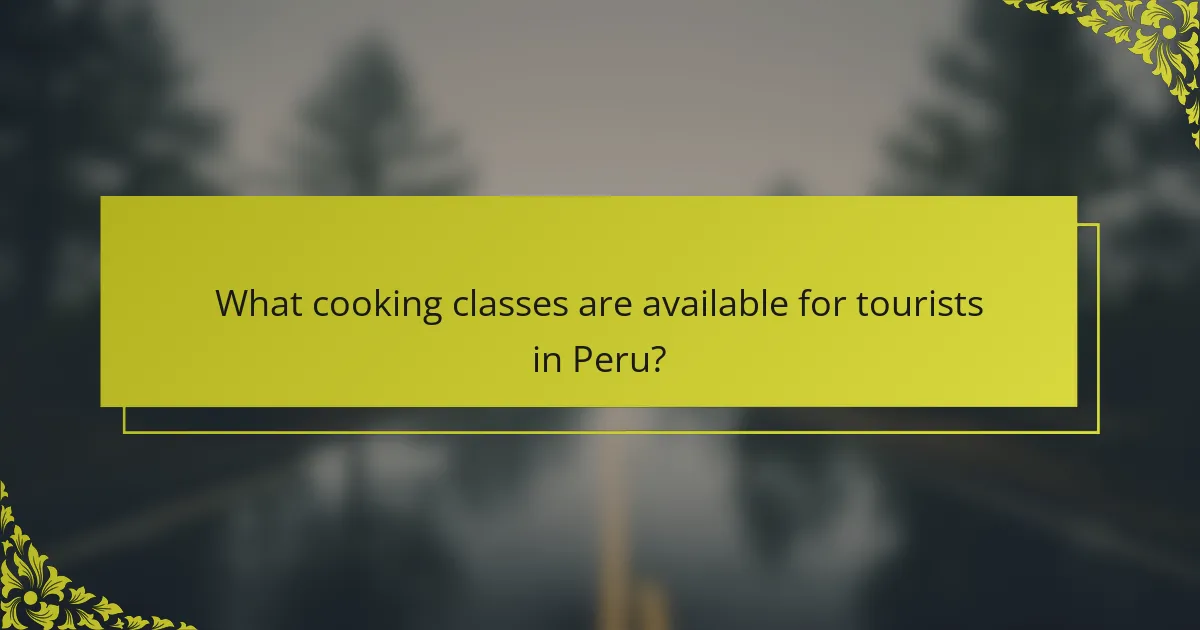
What cooking classes are available for tourists in Peru?
Tourists in Peru can choose from various cooking classes, including hands-on workshops in Lima, traditional Andean cooking experiences, and market tours followed by cooking sessions. Classes often focus on local ingredients, such as quinoa and potatoes, and traditional dishes like ceviche and lomo saltado. Popular options include classes at renowned culinary schools and private sessions with local chefs. Many classes cater to different skill levels, ensuring an enriching experience for all participants.
How do cooking classes vary by region and dish type?
Cooking classes in Peru vary significantly by region and dish type, reflecting local ingredients and culinary traditions. Coastal classes often focus on seafood dishes like ceviche, while Andean regions emphasize ingredients such as potatoes and corn in dishes like causa. Amazonian cooking classes highlight exotic fruits and fish. Each region’s unique cooking techniques and flavors create diverse learning experiences. Local markets often serve as sources for fresh ingredients, enhancing the authenticity of these culinary experiences.
What skills can participants expect to learn in these classes?
Participants can expect to learn a variety of culinary skills in these classes, focusing on traditional Peruvian dishes. Skills include ingredient selection, preparation techniques, and cooking methods specific to regional cuisine. Participants will also gain knowledge about local ingredients and their unique attributes, enhancing their overall culinary experience. Additionally, classes often emphasize presentation skills and flavor pairing, providing a comprehensive understanding of Peruvian gastronomy.
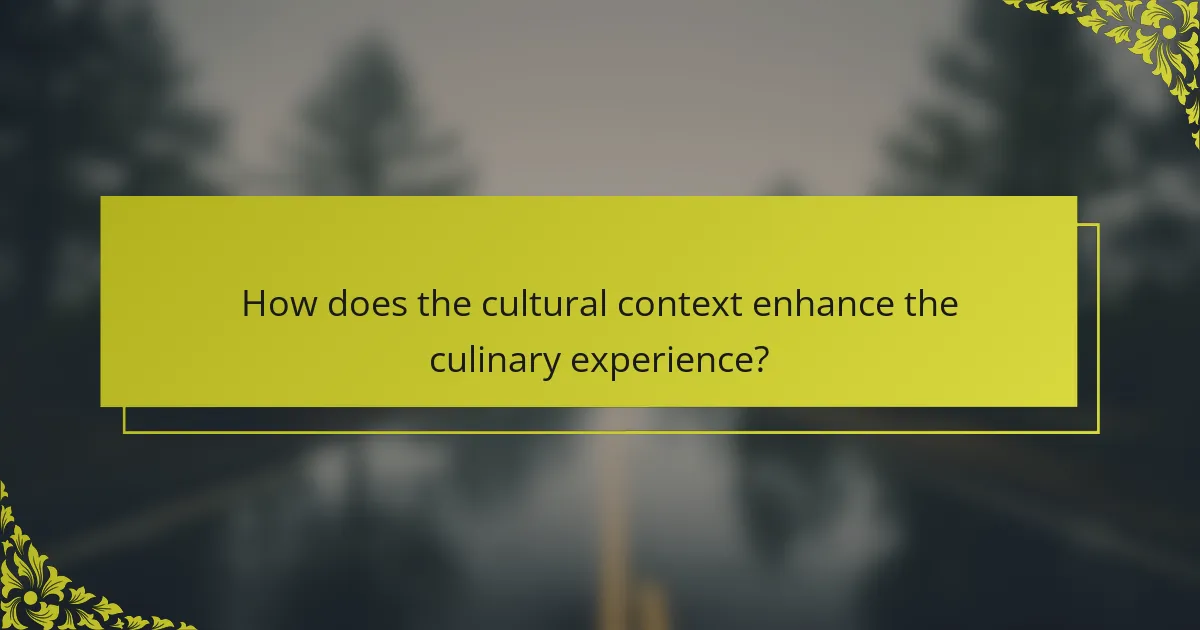
How does the cultural context enhance the culinary experience?
Cultural context significantly enhances the culinary experience in Peru by connecting food to traditions and local ingredients. Traditional dishes reflect regional customs and historical influences, creating a rich narrative around each meal. Cooking classes immerse participants in local culinary practices, fostering a deeper appreciation for the techniques and flavors unique to Peruvian cuisine. Local ingredients, such as quinoa and ají peppers, not only contribute distinct tastes but also embody the cultural heritage of the region. This integration of culture, tradition, and local produce transforms dining into a holistic experience that resonates with both locals and visitors.
What traditional cooking methods are preserved in modern kitchens?
Traditional cooking methods in Peru, such as pachamanca and huatia, are still practiced in modern kitchens. These techniques emphasize the use of local ingredients and communal cooking. Pachamanca involves cooking meat and vegetables underground with heated stones, while huatia uses a similar underground method but with a clay pot. Both methods preserve the flavors and cultural significance of Peruvian cuisine. Additionally, techniques like grilling and frying remain popular, showcasing the blend of tradition and contemporary culinary practices.
How do festivals and local events celebrate Peruvian cuisine?
Festivals and local events in Peru celebrate its cuisine through vibrant displays of traditional dishes and culinary heritage. These gatherings showcase regional specialties like ceviche and lomo saltado, highlighting local ingredients such as potatoes and corn. Cooking demonstrations and classes allow participants to learn traditional cooking techniques, fostering appreciation for Peruvian culinary arts. Additionally, cultural performances often accompany food, creating a rich sensory experience that connects people to Peru’s diverse gastronomic landscape.
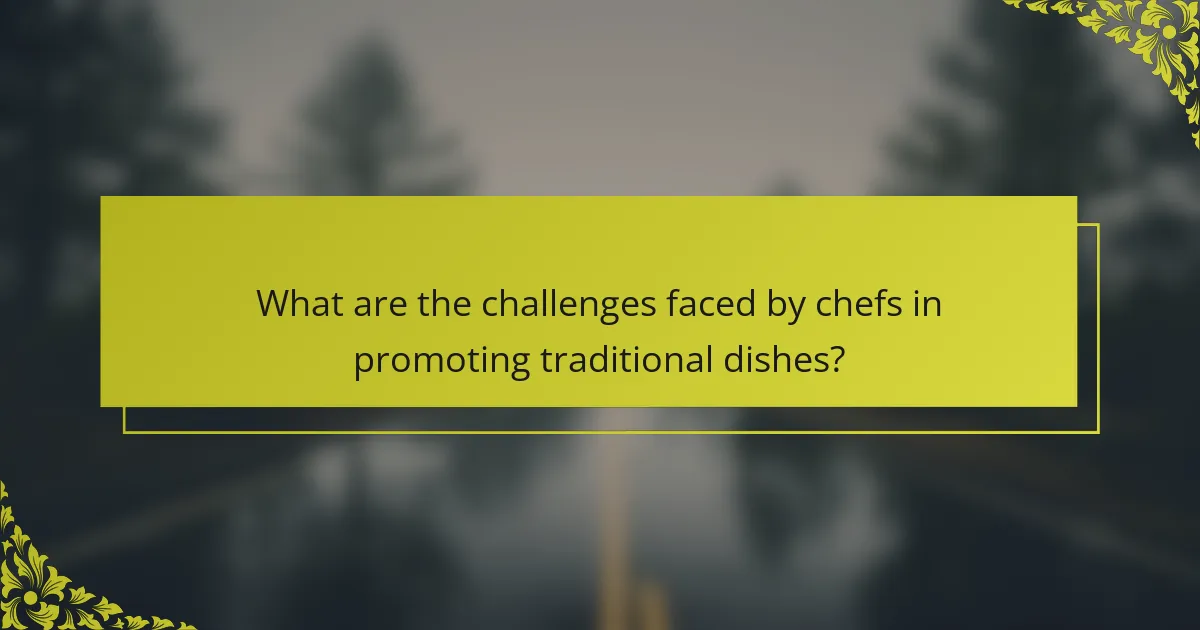
What are the challenges faced by chefs in promoting traditional dishes?
Chefs face several challenges in promoting traditional dishes. Limited awareness of local ingredients hinders their ability to showcase authentic flavors. Additionally, competition from modern cuisine can overshadow traditional offerings.
Another challenge is the lack of interest from younger generations, who may prefer fast food or international dishes. This trend risks the preservation of culinary heritage.
Moreover, chefs often struggle with sourcing traditional ingredients consistently, which affects dish authenticity. Lastly, marketing traditional dishes requires effective storytelling to connect with consumers emotionally.
How do chefs balance tradition with modern culinary trends?
Chefs balance tradition with modern culinary trends by integrating local ingredients and techniques with contemporary cooking styles. They respect traditional recipes while experimenting with flavors and presentation. This approach enhances the culinary experience in Peru, showcasing unique dishes like ceviche alongside innovative cooking classes. Chefs often use indigenous ingredients, promoting sustainability and cultural heritage. For example, incorporating quinoa and aji peppers in modern dishes highlights Peru’s rich gastronomy while appealing to modern palates.
What resources are available for aspiring chefs to learn about Peruvian cuisine?
Aspiring chefs can access numerous resources to learn about Peruvian cuisine. Cooking classes in Peru offer hands-on experience with traditional dishes. Online platforms provide video tutorials and recipes. Cookbooks focusing on Peruvian ingredients and techniques are widely available. Local markets serve as excellent sources for fresh, authentic ingredients. Networking with local chefs enhances practical knowledge and cultural understanding.
What common mistakes should tourists avoid when exploring Peruvian food?
Tourists should avoid several common mistakes when exploring Peruvian food. First, don’t overlook street food, which offers authentic flavors. Second, avoid assuming all dishes are spicy; many are not. Third, refrain from skipping local markets, as they provide fresh ingredients and unique experiences. Lastly, be cautious with portion sizes; Peruvian servings can be generous, so share dishes to sample more options.
